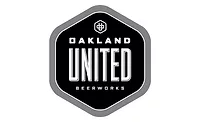2017 Beer Report: Craft beer up single-digits in 2016
Analysts credit deceleration to SKU proliferation, quality issues


After many years of double-digit gains in volume and dollar sales in the United States, the craft beer market could be approaching a status of maturation, according to market analysts. Citing data from June 30, 2016, the Boulder, Colo.-based Brewers Association (BA) stated that production for small and independent brewers increased 8 percent.
In comparison, in 2015, the association reported volume growth of 13 percent and dollar sales growth of 16 percent.
The deceleration of growth for craft beer is being attributed to a variety of factors, including SKU proliferation and quality issues. “Consumer fatigue and confusion have begun to take hold in the category,” says Brian Sudano, managing partner with New York-based Beverage Marketing Corporation (BMC). “There have been too many brands entering the marketplace in too short of a period of time, which has resulted in some quality issues also. As the craft market has slowed, retailers have taken a look at its craft offerings as turn for square foot resulting in SKUs being eliminated. This further will put pressure on craft velocity.
“Despite the challenging trends, craft continues to grow by mid-single digits off a fairly sizable base as tap rooms continue to attract consumers,” he continues. “Overall we are expecting craft to grow in [the] mid-single range in 2017.”
Danelle Kosmal, vice president of beverage alcohol practice for New York-based Nielsen, echoes similar sentiments. “Craft growth has been slowing, particularly among many large national craft brands,” she says. “However, the long tail of craft continues to grow, as do several large regional brands that continue to expand their distribution.”
Another impact on the craft beer market are the mergers and acquisitions tied to larger global brewers. “Major brewers and private equity firms’ acquisition of craft [brands] have driven a large number of craft brewers to search to exit the business,” BMC’s Sudano explains. “As this occurs, focus moves from the beer to more on the payout, which impacts market execution, innovation and other aspects of the business.”
In an August 2016 consumer report titled “Why ‘mass-craft’ makes sense to many US beer drinkers,” Chicago-based Mintel highlights how the rise of craft beer in the United States helped give way for large domestic brewers to develop their own “craft” beer brands and acquire strategic regional craft brewers.
In 2016, Devil’s Backbone Brewing was purchased by Leuven, Belgium-based Anheuser-Busch InBev (AB InBev). This was the company’s only craft beer announcement in 2016; although AB InBev previously had announced four other purchases in 2015. Also taking place in 2016, Chicago-based MillerCoors’ craft and import division Tenth and Blake Beer Co. acquired Revolver Brewing, Hop Valley Brewing Co. and Terrapin Beer Co.
The report found that consumers draw a distinction between “true craft” and “mass craft.” However, that distinction does not rule out one or the other. In an Internet poll of 1,871 users aged 22 or older, 25 percent of consumers indicated they would drink “any craft beer.” In comparison, 18 percent named “craft-style/mass-craft” from national brands; 17 percent named “true craft” from small regional, local breweries; and 2 percent said “true craft” only.
Mintel’s report also theorizes that as craft beer becomes more mainstream, it has given way to more opportunities for “mass craft.”
“This is likely to appeal to many American beer drinkers who might want something a bit more premium and flavorsome than the dominant mild-tasting mainstream beer from the 1980s, but do not want a ‘true craft’ beer that is too challenging to their taste buds,” the report states.
Despite these trends, analysts anticipate moderate growth for the beer segment and call attention to emerging beer-style trends. A bright spot for the craft beer segment has been the recent growth among sour beers, Nielsen’s Kosmal notes. For example, Gose-style brews increased more than 1,000 percent in 2016, she adds.
“Sour Ales were also strong, growing 24 percent in dollars last year,” Kosmal says. “Imperial Porters, Golden or Blonde Ales, Kölsch, and Shandies were among some of the other top-growing craft beer styles for 2016. India Pale Ale growth rates have slowed slightly, but are still within the strong double-digit ranges for 2016: plus 22.5 percent in case volume and plus 24.7 percent in dollars.”
Another positive for craft beer is its international growth. According to the BA, export volume of craft beer was up 16.3 percent, totaling 446,151 barrels of beer in 2015. Western Europe saw the largest increase: 33.4 percent. BI
Top craft beers
(Individual brands)
| Blue Moon | $336,737,386 | -3.2 | 10,313,629 | -5.3 |
| Samuel Adams | $331,440,894 | -6.9 | 9,887,123 | -9 |
| Sierra Nevada | $256,882,294 | -3 | 7,551,336 | -5.4 |
| New Belgium | $196,614,363 | 1.7 | 5,721,456 | -0.9 |
| Leinekugel Specialty | $170,553,265 | -5.7 | 5,578,537 | -7.9 |
| Lagunitas | $164,171,603 | 22.2 | 4,234,797 | 21.6 |
| Shock Top | $136,573,474 | -12.4 | 4,561,662 | -14.9 |
| Shiner | $136,055,847 | -2.9 | 4,128,670 | -5.1 |
| Deschutes | $78,746,563 | 12.1 | 2,131,886 | 6.4 |
| Goose Island | $72,408,055 | 25.7 | 2,153,305 | 28.2 |
| Total sales* | $3,838,258,554 | 7.7 | 106,100,240 | 4.7 |
*Includes brands not listed.
Source: Information Resources Inc. (IRI), Chicago. Total U.S. supermarkets, drug stores, gas and convenience stores, mass merchandisers, military commissaries, and select club and dollar retail chains for the 52 weeks ending Dec. 25, 2016.
Looking for a reprint of this article?
From high-res PDFs to custom plaques, order your copy today!






